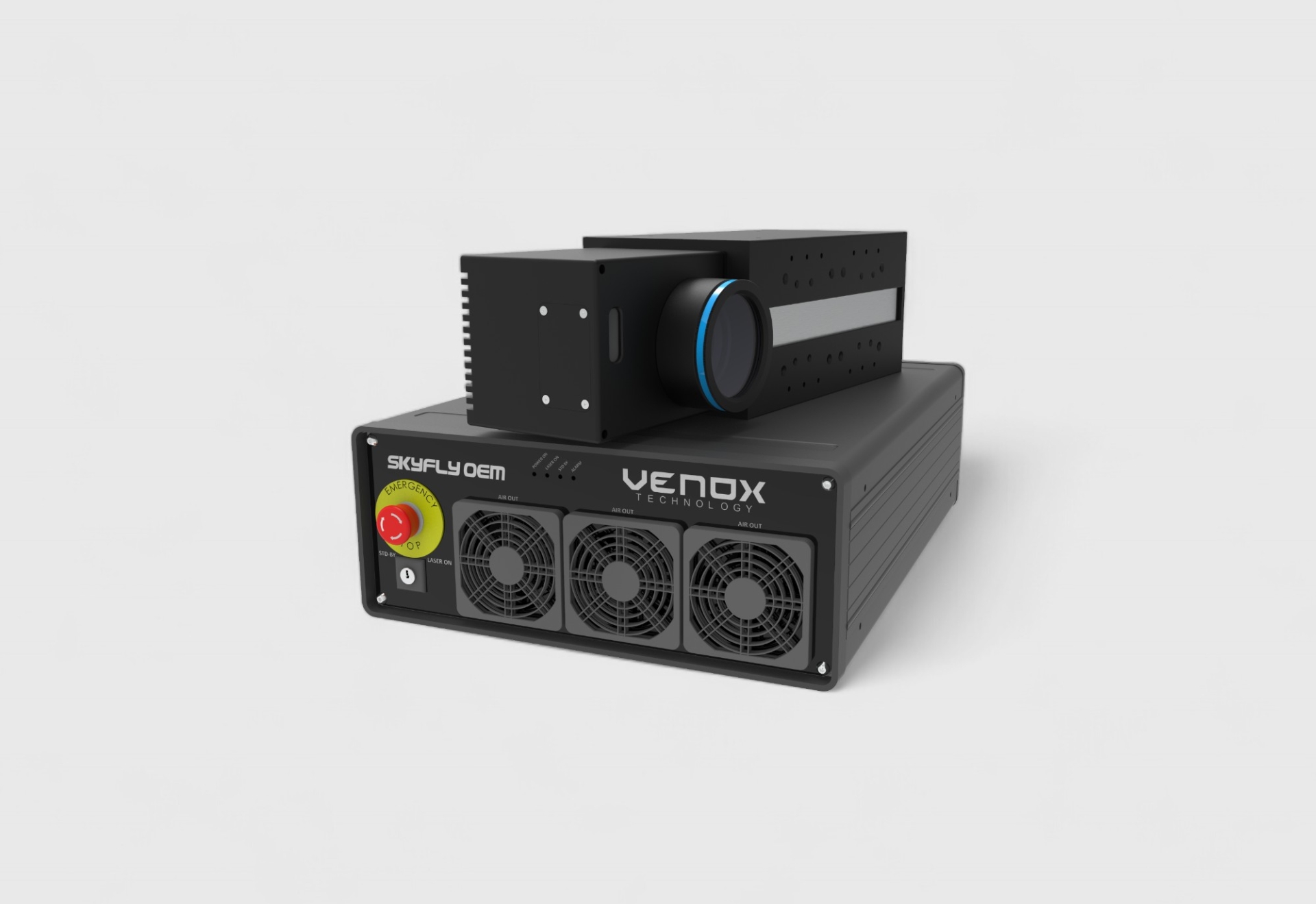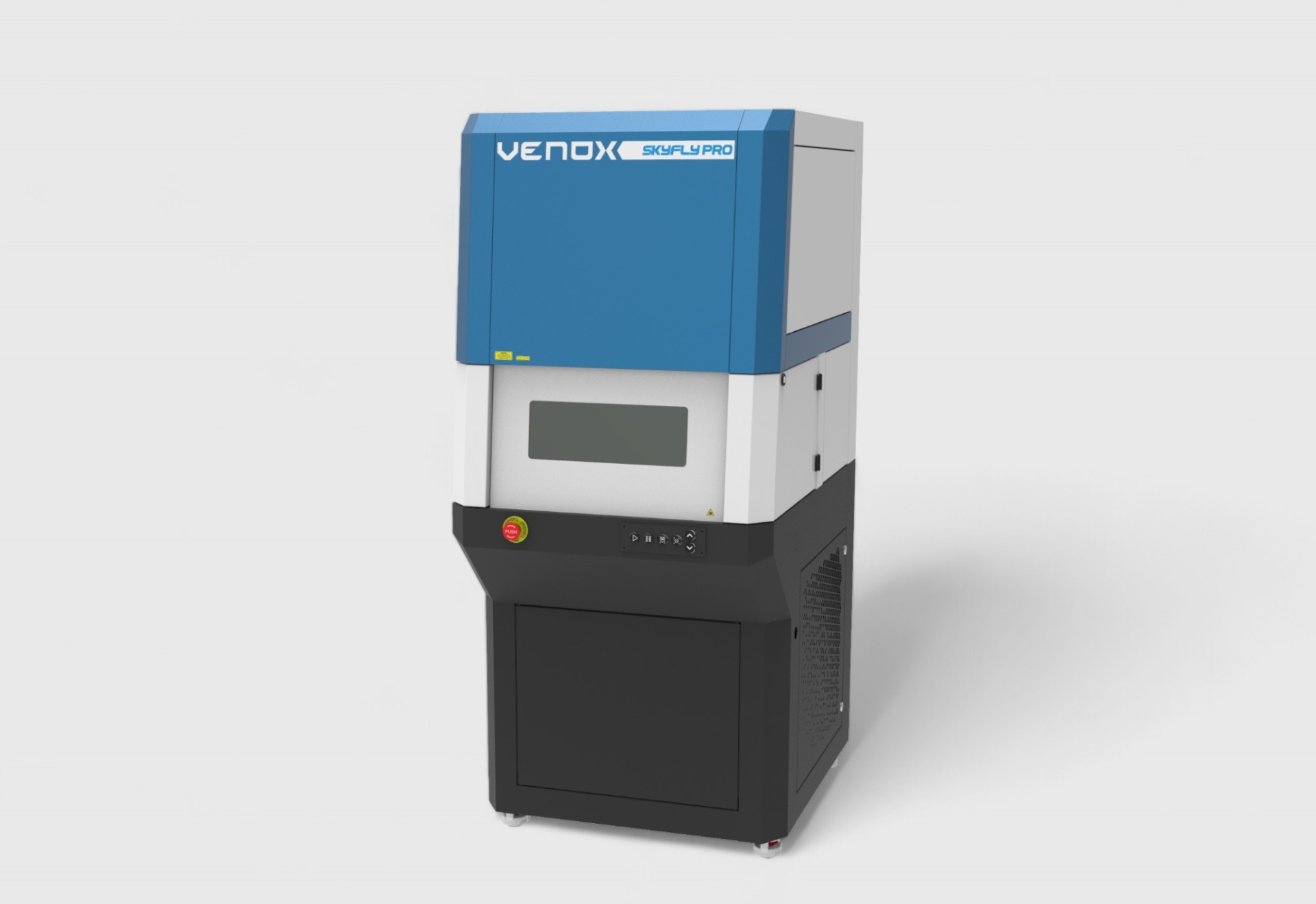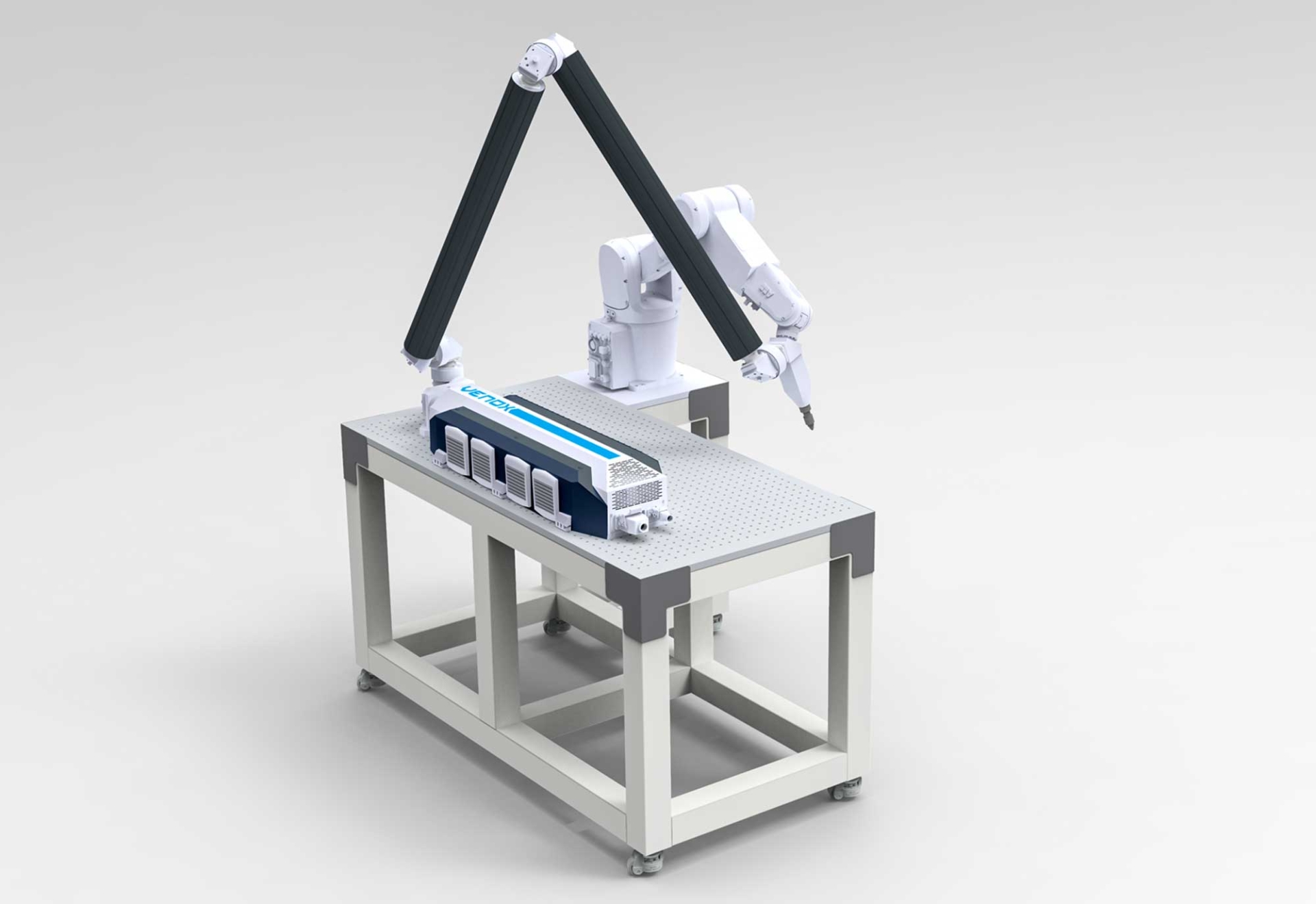After-Sales Maintenance for Laser Marking Machines
Venox Teknoloji’s after-sales maintenance approach is designed to ensure that your laser marking machines operate continuously, safely, and with repeatable quality. We do not consider maintenance merely a “breakdown repair” activity; instead, we evaluate process engineering, operator competency, and environmental conditions together. This ensures that critical parameters such as beam quality, focus accuracy, and scanning speed remain consistent and aligned with your production goals. Through preventive planning, we reduce unexpected downtime, optimize consumable and energy usage, and lower the total cost of ownership. In this text, you will find detailed information on all elements, from the scope of periodic maintenance to remote monitoring, spare parts strategy, and ROI impact.
Scope of Periodic Maintenance
Periodic maintenance is based on a customized checklist tailored to your equipment and environmental conditions. Dust load, ambient temperature, shift structure, processed material and coating types, and the architecture of your laser source (fiber, CO2, UV, MOPA) determine the plan’s content and frequency. During visits, the optical path, mechanical components, power/cooling system, safety circuits, and software/communication layer are tested independently. Contamination, micro-scratches, and alignment drift in optical components; backlash, vibration, and friction abnormalities in mechanical systems; power fluctuations and grounding issues in the power stage; and protocol and license validation issues in the software layer are examined in detail.
- Optical path maintenance: Cleaning of the F-Theta lens, protective glass, scanner head window, and beam path; alignment and focus referencing according to specifications.
- Power and cooling: PSU output stability, cable/connector heating, fan and filter checks, chiller/cooling flow rate and temperature stability.
- Calibration and verification: Field uniformity, spot size, speed–power matching, hatch parameters, and result verification using test grids.
- Mechanical components: Axis–rail movements, coupling and fastener torque control, isolation of vibration sources.
- Safety and compliance: Emergency stop, door switches, interlocks, laser class labeling, and light barrier tests.
- Software/communication: Driver and control software, field data collection protocols, remote access configuration.
At the end of the periodic maintenance, a detailed maintenance report is provided. The report includes completed operations, measurement results, used consumables, recommended replacement parts, and planning suggestions for the following period. This allows your intervention history to be audited and enables your quality department to document repeatability.
Failure Prevention and Remote Monitoring
At the heart of preventive maintenance lies data-driven evaluation. Recorded scanning times, laser operating hours, power curves, environmental sensors, and test marking outputs reveal patterns that indicate failure probability. Threshold contamination on the lens, rising temperature in the scanner head, PSU fluctuations, or critical flow reductions in the chiller generate early warnings. In suitable installations, secure tunnels allow remote access; software logs, parameter sets, license issues, and communication errors are quickly analyzed. When remote resolution is not possible, a field team arrives equipped with the necessary spare parts, improving first-visit resolution rates.
This approach shortens unplanned downtime and detects quality deviations before they affect the production line. In multi-shift operations, aligning maintenance windows with planned stoppages minimizes production loss.
Spare Parts and Consumable Management
Spare parts management directly affects maintenance success. We recommend stocking policies for lenses, F-Theta, protective glass, scanners, PSUs, fans, filters, and specific cable sets. “Backup set” and consignment options for critical lines increase first-visit resolution rates. Using original parts is essential for both occupational safety and marking quality; parameters such as lens coating, wavelength compatibility, and scanner dynamics may not perform the same with third-party components.
Proper planning of filter and fan replacement intervals affects not only cooling performance but also the rate of optical contamination. In dusty industrial environments, shortening these intervals prevents symptoms such as darkening and hot spots caused by high energy density on the lens and window glass.
Why Venox for Maintenance?Venox treats laser marking technology not only as equipment but as a complete production system. Maintenance service is integrated with process validation, operator training, occupational safety, and quality assurance. With our experienced field team, standardized checklists, and measurable SLAs (response/resolution times), we aim for maintenance to be preventive rather than corrective. This builds a common language with your quality departments; measurements are documented through traceable reports, generating visible, plannable, and comparable metrics for management.
Compliance, Safety, and Documentation
Laser class requirements, interlock chains, emergency stop circuits, and safety labeling are integral parts of maintenance. The line between operator safety and process safety can quickly deteriorate due to minor violations. Therefore, the integrity of protective windows, reliability of door switches, and effectiveness of mechanisms preventing unauthorized access to the marking area are verified at every visit. The post-maintenance report includes safety test results, measurement devices used, and calibration certificates. When required, reference files are prepared for internal and customer audits.
Our documentation discipline not only meets compliance requirements but also demonstrates repeatability and process maturity. The traceability required for your quality management systems (e.g., ISO 9001) is ensured.
Integrated Services and Operator Competency
The effectiveness of maintenance multiplies with operator competency. Proper interpretation of parameter sets, part fixturing, surface preparation, and safety procedures directly determine marking quality. Therefore, we integrate training and process consultancy into maintenance plans. When needed, you can strengthen your package with the following services: Teknik Servis, Eğitim, Uygulama Danışmanlığı. Training includes practical focusing, reading test grids, hatch strategy selection, the physics of energy transfer to the substrate, and troubleshooting protocols.
Planning and SLA Model
Planning is carried out by considering equipment criticality index, shift schedule, and line redundancy. For high-priority lines, shorter service intervals, rapid response windows, and pre-positioned spare parts are activated. SLAs include call response time, remote diagnosis start time, field arrival time, and resolution targets. These metrics are shared transparently through monthly/quarterly reports, and corrective actions are planned for areas falling outside target values.
Aligning maintenance windows with planned stoppages minimizes production loss. In industries with high seasonal demand fluctuations, the maintenance schedule is proactively adjusted.
ROI and Total Cost of Ownership
Regular maintenance reduces rework and scrap costs; by improving mark readability, it decreases the number of defective products. Clean optics and correct focusing enable operating at lower power levels for the same marking quality, significantly reducing energy consumption. Timely maintenance of cooling and filtration extends the lifespan of the power block and scanner; preventing major component failures accelerates return on investment. Planned maintenance contracts ensure cost predictability and stabilize cash flow.
From a production engineering perspective, the impact of maintenance on process capability (Cp, Cpk) should be measured and monitored. Spot diameter, line thickness, contrast, and depth statistics on test grids generate early-warning signals regarding process health when tracked over time.
Environmental Conditions and Process Improvement
In environments with high levels of dust, oil vapor, and solvents, extraction efficiency and airflow direction are critical for sustainable optical cleanliness. The contamination trend of the protective window should be monitored alongside ambient particulate measurements; cleaning intervals that extend lens life should be determined using real data. Additionally, fixturing strategies and repeatable focusing practices (focus gauge, automatic Z-axis) directly improve maintenance outcomes. Appropriate hatch directions, line spacing, and pulse frequencies for the material and surface reduce thermal buildup, increasing edge sharpness and contrast.
Measurement and Verification
During each maintenance session, test markings are performed on reference materials. Focus distance, field uniformity, geometric accuracy, and contrast are measured using calibrated devices. Traceable calibration certificates of measurement devices are included in the report. This discipline establishes a reliable documentation chain your quality team can present confidently during internal and external audits.
Risk Management and Redundancy
For critical production lines, we recommend keeping backup components in stock. Stocking “small but line-stopping” parts such as scanner head windows, protective glass, and sensitive cables enables production to resume within hours. Backing up software licenses and parameter sets is crucial for rapid recovery in control computer failure scenarios. These backup and restore steps are practiced as part of operator training.
Workflow: Request > Diagnosis > Intervention
When a service request is received, remote diagnosis is initiated first; logs and parameters are reviewed, and temporary solutions are applied if necessary. When a field visit is scheduled, likely spare parts are reserved. During the intervention, the root cause of the failure is identified; solutions targeting the cause—not merely the symptom—are implemented. After the operation, test markings are performed, quality approval is obtained, and recommended precautions are reported. This entire workflow is aligned with your facility’s maintenance KPIs.
Common Problems and Tips
Low contrast and widening line thickness usually indicate focus deviation or optical contamination; inspection of protective glass and lens should be performed first, followed by focus referencing. If a repeating geometric error occurs in one corner of the marking field, scanner alignment and F-Theta lens surface checks should be performed. For material-based unwanted colors, energy density, pulse frequency, and hatch strategy should be evaluated together. Regular operator practice in “reading test grids” strengthens intuitive parameter management.
Conclusion and Call to Action
After-sales maintenance is the guarantee not only of equipment health but also of your marking quality and delivery reliability. Venox Teknoloji offers an end-to-end solution with periodic maintenance, remote monitoring, spare parts management, and training. You may contact us to design a maintenance schedule suited to your production goals and to plan the initial assessment visit. Securing your process, reducing downtime, and lowering total cost of ownership are now much more predictable. Related support pages: Teknik Servis, Eğitim, Uygulama Danışmanlığı.







